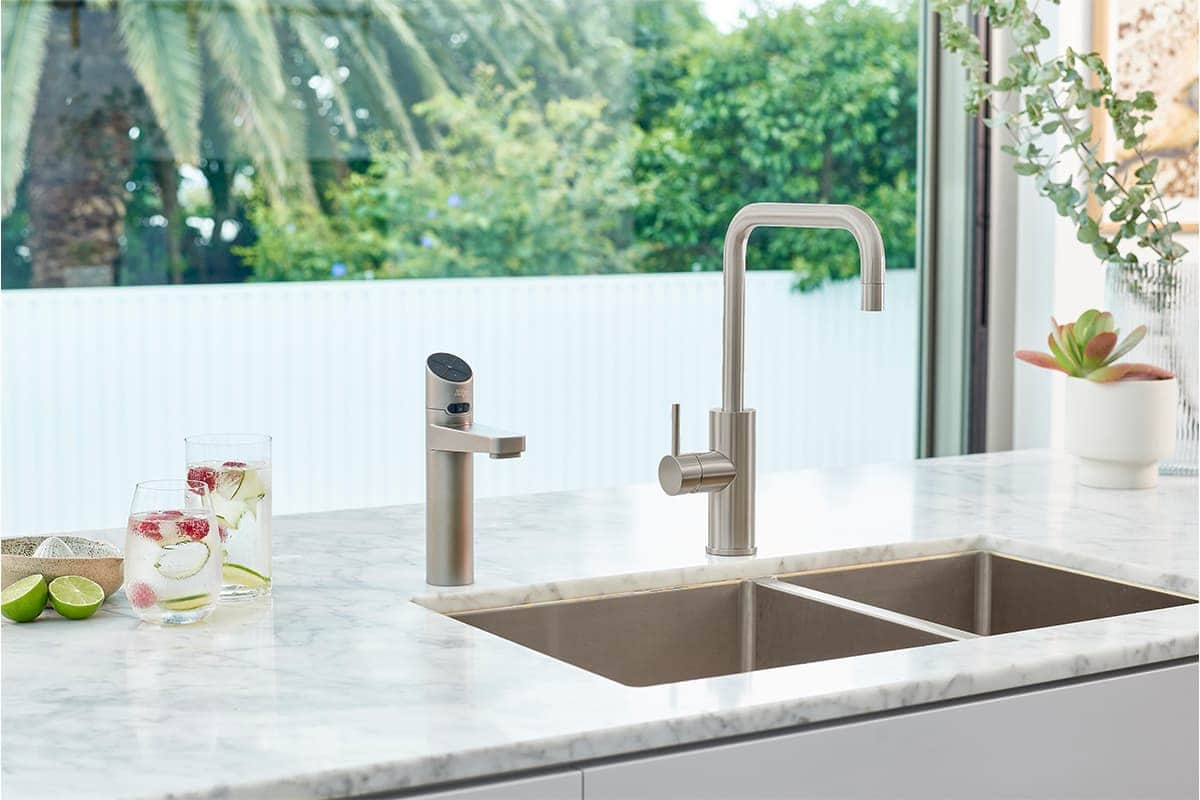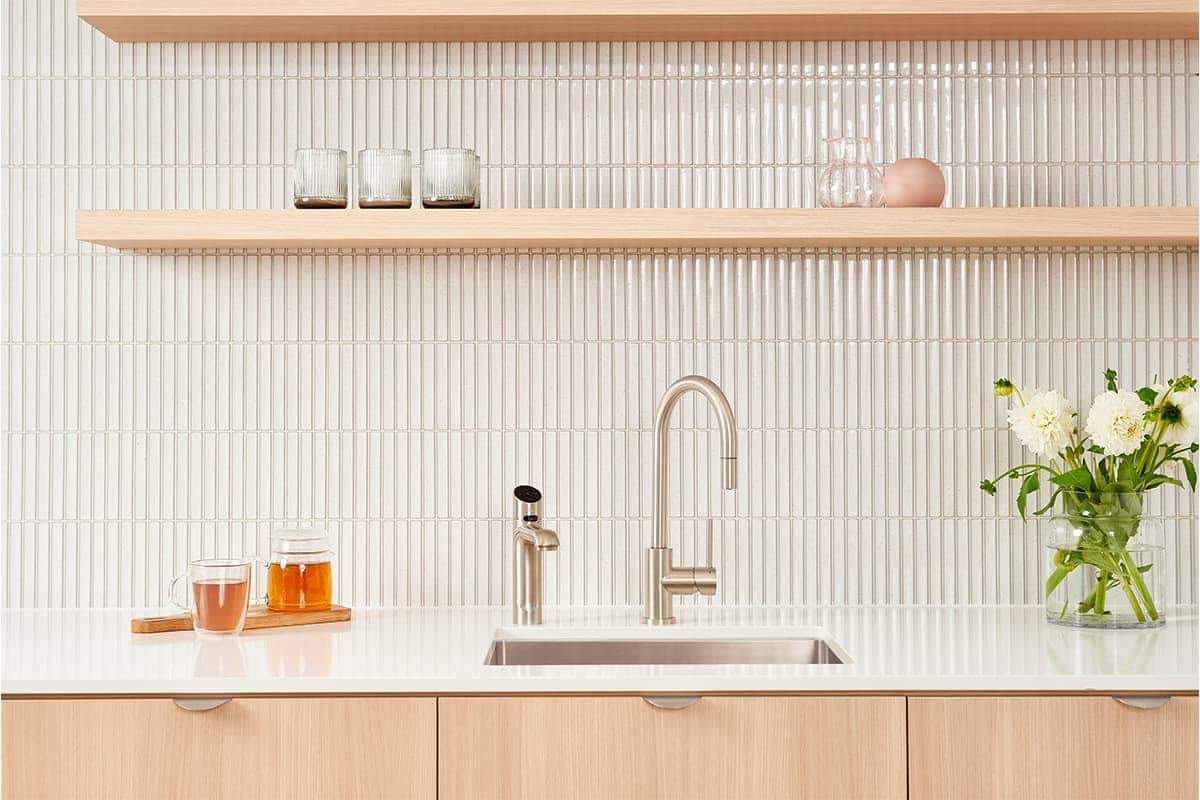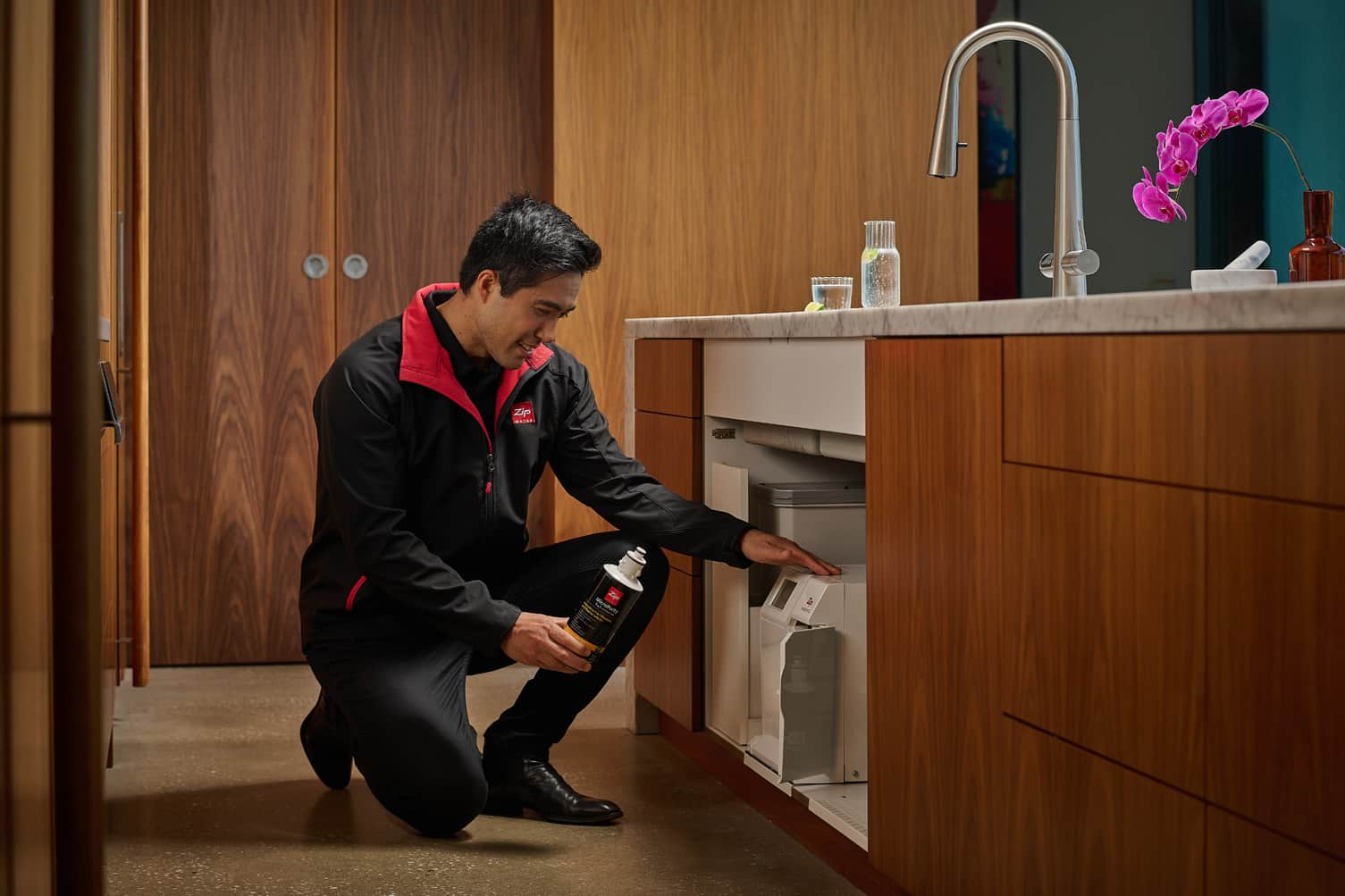Hard Water vs Soft Water: A Straight-Talking Guide for Australian Homes
Design | 23-04-25

You turn your tap on every day – but do you know what kind of water you’re drinking?
For most of us, the difference between hard and soft water is something we only think about when our appliances start acting up or our skin feels a bit off. But the truth is, water hardness affects everything from your morning coffee to the lifespan of your kettle.
In this quick guide, we’ll cover:
- Hard water vs soft water
- How to tell whether your water is hard or soft
- Health impacts of hard and soft water
- Which tastes better?
- How to control hard water in your home
- And some helpful FAQ
Let’s start with the basics.
Hard water vs soft water
Hard water is water that contains higher levels of dissolved minerals (mainly calcium and magnesium). Soft water has fewer of these minerals, either naturally or due to treatment.
What does that really mean?
Those minerals in hard water can build up inside your kettle, affect how well your soap lathers, and even change the taste of your water. Soft water feels gentler on your skin and is often kinder to appliances – but it’s not always perfect either.
Here’s a quick breakdown of the differences.
Hard Water vs Soft Water
| Feature | Hard Water | Soft Water |
|---|---|---|
| Minerals | High in calcium and magnesium | Low mineral content |
| Soap behaviour | Doesn’t lather well | Lathers easily |
| Appliance impact | Can cause limescale and wear | Helps appliances last longer |
| Taste | Earthy, mineral-rich | Smooth, sometimes “flat” in comparison |
| Skin and hair | May leave a residue or dry feeling | Feels soft and clean |
| Testability | Easily measured with test kits or estimate by postcode | Easily measured with test kits or estimate by postcode |
Knowing whether your water is hard or soft can help you protect your appliances, look after your skin, and even get more flavour out of your tea.
So, how do you find out what’s coming through your tap?
How to know if your water is hard or soft
There are a few ways to find out. The most accurate is to use a water hardness test kit or test strips, which are easy to order online. These detect the level of minerals in your water and give you a quick answer in parts per million (ppm). According to the Australian Drinking Water Guidelines, anything over 200 mg/L of calcium carbonate is considered hard.
But there are also simple clues you can look for around the house.
- Struggling to get soap to lather? It could be hard water.
- Noticing white scale in your kettle or around your tap? That’s limescale – left behind by hard water.
- Does your skin feel dry after showering? Hard water might be the reason.
You probably don’t have a testing kit on hand right now. Geography gives us good clues, too. Here's a quick guide based on where you live.
Water hardness across Australia
Water quality changes depending on where you live – and that includes hardness. Some regions have naturally soft water that feels smooth on your skin and tastes crisp straight from the tap. Others deal with harder water that leaves a chalky ring in your kettle and takes a little more effort to manage.
If you’re in Perth or Adelaide, your water is on the harder side. Both cities rely heavily on groundwater sources, which pick up minerals like calcium and magnesium along the way. That’s what causes limescale — the crusty white stuff you see on taps or inside appliances.
Melbourne is at the other end of the scale. Its water comes from forested catchments in the Yarra Ranges – fresh, soft, and naturally low in minerals.
Sydney and Brisbane sit somewhere in the middle. Most suburbs get moderately hard water, though it varies depending on your postcode and which treatment plant services your area.
Canberra’s water is typically soft to moderately soft. Like Melbourne, it benefits from protected water sources. Hobart and Darwin also enjoy soft water, drawn from rain-fed or mountain-based systems that carry fewer minerals.
Learn more about your postcode at:
If you live rurally—especially if you’re using tank or bore water—there’s a chance your water is harder. And you might already be seeing the signs in your kettle or around your taps.
How water hardness affects your appliances
You can’t always see it, but hard water can quietly wear down your appliances over time. The minerals it carries (mostly calcium and magnesium) don’t just flow through your system. They stick around. And that’s when problems start.
You might notice it first in your kettle. Do you have chalky flakes floating in your cuppa? That’s limescale. It’s not dangerous, but it’s not ideal either. And it’s just the beginning. Hard water leaves the same deposits inside your coffee machine, dishwasher, hot water system and washing machine. Over time, it clogs up heating elements, reduces efficiency, and can even shorten the lifespan of your appliances.
It’s not just appliances, either. Shower heads, taps, and pipes are affected too. Limescale can block jets and reduce water pressure. It can dull your fixtures and make glassware look cloudy no matter how well you rinse.
The frustrating part? You don’t always see the damage until it’s too late. That’s why people in hard water areas can replace appliances more frequently—or spend more on energy—without realising why.
Health impacts of soft water vs hard water
Hard water isn’t unhealthy
Hard water contains calcium and magnesium — both are minerals your body needs. According to the World Health Organization’s guidelines for drinking water quality, drinking hard water can help contribute to your daily intake. So it’s not harmful at all.
But it can be harsh on your skin and hair. According to Healthline, some people find it worsens eczema or leaves skin feeling dry. It can also leave a film on your hair and scalp that’s hard to rinse away.
Soft water is gentler – but watch the sodium
Naturally soft water is absolutely safe to drink. But if your home has a water-softening system that uses sodium, that’s worth knowing. It can increase the salt content slightly, which isn’t ideal if you're on a low-sodium diet or mixing baby formula.
So which is healthier? Let’s be clear: they’re both healthy and safe. But soft water often feels better, especially on your skin.
Which tastes better – hard water or soft water?
This one is surprisingly personal.
Hard water has a fuller, sometimes chalky flavour (especially if it’s high in magnesium). Some people prefer it. But others find it gives tea or coffee a dull or flat taste.
Soft water is smoother, but it can also taste slightly flat if you’re used to mineral-rich water. Filtered soft water strikes a nice balance – clear flavour, clean finish.
And if you’re a coffee lover, soft or filtered water is your friend. It brings out more nuance in the flavour.
How to control water hardness in your home
If you’ve got hard water, the good news is you can do something about it. And you don’t have to overhaul your entire plumbing system to make a difference.
The most comprehensive fix is a water softener. Water softening systems are usually installed at the point where water enters your home, and they replace hard minerals with sodium or potassium. But while they're great for your plumbing, it's not always the best option for drinking water, especially if you're on a low-sodium diet.
For most people, it’s about picking your battles. Descaling products are a handy way to deal with mineral build-up in your kettle or coffee machine. You can also clean taps and shower heads with vinegar to remove scale naturally. These are quick wins – especially if you stay on top of them.
Then there’s filtration. A good water filter can reduce hardness, improve taste, and protect your appliances all at once. It won’t soften your water entirely, but it makes a noticeable difference. And it’s an easy upgrade if you're not ready to commit to a full softening system.
One more thing to consider? Bottled water. If you’ve been reaching for it to avoid the taste of your tap water, there’s a better way. A filtered system gives you the same crisp, clean taste – without the cost or plastic waste.
3 types of filtered water from the tap? Meet the Zip HydroTap
The Zip HydroTap is one of those rare kitchen upgrades that solves multiple problems at once. It makes your water taste better. It helps protect your tapware. And it does it all without taking up bench space or adding clutter.
If you live in a hard water area, this is where it shines. The MicroPurity™ filtration system removes chlorine, dirt, microplastics, and particles down to 0.2 microns. That helps reduce the scale that builds up inside the tap, protecting your system from the inside out – and giving you cleaner, better-tasting water at the same time.
At its core, the HydroTap is a filtered water system – but it’s a lot more than that. It gives you boiling, chilled and sparkling water instantly. No kettles. No waiting. And no single-use bottles cluttering up the fridge.
It’s also designed to blend in beautifully; you can choose from seven styles and finishes. Whether your kitchen’s sleek and modern or classic and warm, there’s a HydroTap to match.
So if you’re after something that tastes better, works harder, and fits seamlessly into your space – Zip makes the switch easy.
Still curious about your water? Discover chilled and sparkling water from the tap, or learn more with our guides: Is sparkling water good for you? And Soda water vs sparkling water.
FAQ: Hard water vs soft water
Is water in Australia hard or soft?
It depends on where you live. Perth and Adelaide have very hard water. Melbourne, Hobart, Darwin and Canberra have soft water. Sydney and Brisbane vary depending on the suburb.
How do you know if your water is hard or soft?
Look for white scale on appliances or around your taps, poor lathering soap, or dry skin after washing. You can also check your provider’s website or use a water hardness test kit.
What is better, hard or soft water?
Both are safe. Hard water has helpful minerals but can damage appliances over time. Soft water is better for your skin, easier on your plumbing, and often better for coffee and tea.
Now you know about hard vs soft water, let’s take a look at sparkling water. Learn what’s so special about sparkling water or read our guide to the benefits of sparkling water.
















